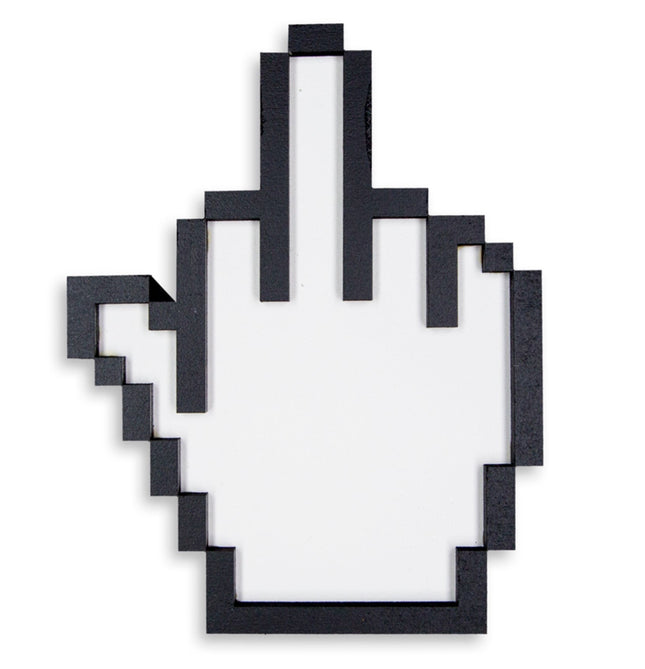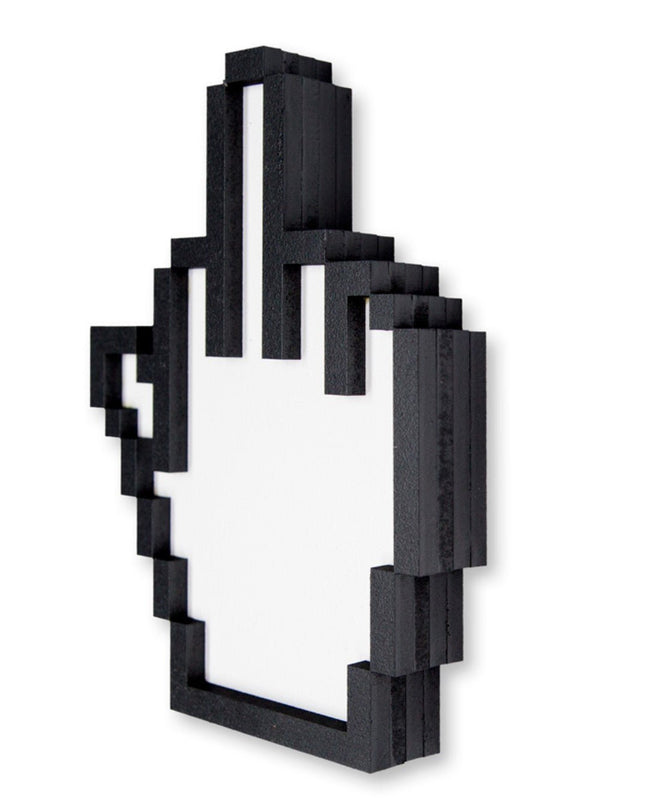
Electronics


Denial- Daniel Bombardier Curser HPM Mixed Media Wood Print by Denial- Daniel Bombardier
Curser Original Hand-Painted Multiple (HPM) Aerosol with Clear Coat Finish on Laser Cut Wood ready to hang by Denial Graffiti Street Artist Modern Pop Art. 2019 Signed & Numbered Aerosol with Clear Coat Finish on Laser Cut Wood Size: 5.5 x 7 x 1 Inches Release: August 14, 2019 Run of 100 "I like to think of myself as an activist in pop art. How I relate with cartoons and graphics is much easier than with photo-realistic stuff. I love referencing things that people are so familiar with. With humor and nostalgia, you can open up communication. I've done that for years and used elements of humor and familiarity to open a dialogue because then you can slide in some real issues and different things you're trying to convey in your work. You have a lot more open stream to the person's consciousness and experience towards how they're taking your art. If you can get them to laugh at it, remember something or relate to some image." -Denial- Daniel Bombardier The Innovative Intersection of Technology and Art in Denial's "Curser" In the dynamic and ever-evolving world of modern pop art, "Curser," a hand-painted multiple (HPM) by the renowned graffiti street artist Denial, stands out as a remarkable piece that encapsulates the spirit of contemporary street pop art and graffiti artwork. Denial, whose real name is Daniel Bombardier, has been a prominent figure in the art world, known for his activist approach and incorporation of pop culture elements into his works. The "Curser" HPM, released on August 14, 2019, is a limited edition series of 100, each piece bearing the artist's unique touch with aerosol paint and a clear coat finish on laser-cut wood. This artwork, measuring 5.5 x 7 x 1 inches, is a visual play on the familiar digital cursor, a ubiquitous digital symbol in the digital age. Denial transforms this everyday icon into a standalone piece of art that challenges viewers to reconsider the symbols that permeate our daily lives—using laser-cut wood as a medium is a nod to the precision and crispness of digital graphics. At the same time, the hand-painted aerosol technique infuses the work with the authenticity and raw appeal of street art. Denial's Artistic Philosophy and Its Reflection in "Curser" Denial's philosophy of using humor and nostalgia to engage audiences is vividly reflected in "Curser." By recontextualizing a digital pointer into a tangible, hand-crafted object, the artist bridges the gap between the virtual and the physical, the ephemeral and the permanent. Denial believes in the power of pop art to initiate dialogue, a belief that is evident in how "Curser" resonates with a broad audience. The familiar shape of the cursor, combined with the unexpected medium and manual intervention, becomes a conversation starter, prompting discussions about the impact of technology on art and society. The clear coat finish on "Curser" gives the artwork a modern sheen, reminiscent of the glossy interfaces of smartphones and computers, thus further blurring the lines between traditional graffiti art and contemporary digital aesthetics. This piece is not merely an artwork but a statement on the convergence of our digital experiences with the physical world. Denial's work exemplifies the evolving nature of street pop art, where traditional techniques merge with modern-day themes to create a new form of cultural expression. Collectibility and Cultural Impact of Denial's "Curser" As a collectible, "Curser" holds a special place in street pop art. Its limited run and the individual hand embellishments by Denial make each piece in the series unique, coveted by collectors who value the intersection of street art sensibilities with pop culture commentary. Denial's work, particularly "Curser," is a testament to the growing appreciation for graffiti art as a medium that can entertain and provoke thought. The cultural impact of "Curser" is amplified by its accessibility and relatability. Denial's approachable art invites viewers to reflect on the interplay between their digital habits and the tangible world, an increasingly relevant theme in our tech-driven society. The artwork serves as a reminder of the pervasive nature of digital symbols in our lives and the importance of questioning and exploring these elements through art. "Curser" is a prime example of how contemporary street artists like Denial push the boundaries of what street pop art and graffiti artwork can represent. The piece embodies the transformative potential of art to adapt and respond to the changing landscape of cultural symbols and societal issues. Denial's ability to infuse his work with wit and a sense of familiarity allows for a deeper engagement with his audience, making "Curser" a visually striking piece and a meaningful commentary on our times.
$456.00



